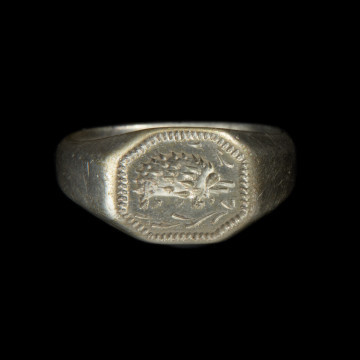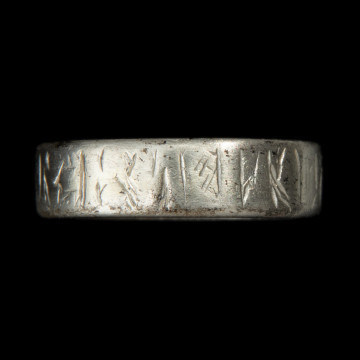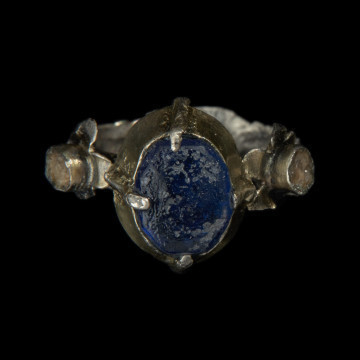
Signet ring with hedgehog
przełom XIV i XV wieku
National Museum in Szczecin
Part of the collection: Craft and industry products of Szczecin
In the second half of the 19th century, there was a large group of wealthy bourgeoisies in Szczecin who wished to assert their property status with their lifestyle. During this period too, jewellery made from precious metals, including household items, was a sign of prestige. To meet these needs Szczecin's goldsmiths often based their showrooms on the Kohlmarkt, or the now defunct Coal Market, near ul. Grodzka, between today's Mariacka and Farna Streets. Friedrich August Weilandt, whose company had been active in Szczecin since the early 1870s, had his jewellery shop at No. 6 Kohlmarkt. as evidenced by the shop's advertisement in Szczecin's address book from 1872 until the Second World War. Among the products of Weilandt's shop, a set of six early 20th-century silver dessert spoons in the company's case has been acquired for the collection of the National Museum in Szczecin. A sign of origin, wealth and social status in the 19th and early 20th centuries was also a knowledge of savoir-vivre. To be accepted in good company, it was not only necessary to have the right wardrobe and presentation. It was also necessary to maintain the appropriate social forms and conventions characteristic of a particular social stratum and, above all, to know the rules of behaviour at table. It was fundamental to know which type of spoon or fork was used for which dishes or desserts and where this cutlery was positioned in relation to the plate. Dessert spoons, longer than those for tea and shorter than those for the table, were placed together with a dessert fork over a large plate parallel to the edge of the table and could be used on Szczecin tables to serve not only strudels, apple pies and cakes, but also cold legumin, egg custard, ice cream and fruit compotes, a very popular choice even today in Germany. Małgorzata Peszko
Author / creator
Object type
spoon
Technique
embossing, polishing
Material
silver
Origin / acquisition method
purchase
Creation time / dating
Creation / finding place
Owner
Muzeum Narodowe w Szczecinie
Identification number
Location / status

przełom XIV i XV wieku
National Museum in Szczecin

przełom XIV i XV wieku
National Museum in Szczecin

National Museum in Szczecin
DISCOVER this TOPIC
National Museum in Szczecin
DISCOVER this PATH
Educational path